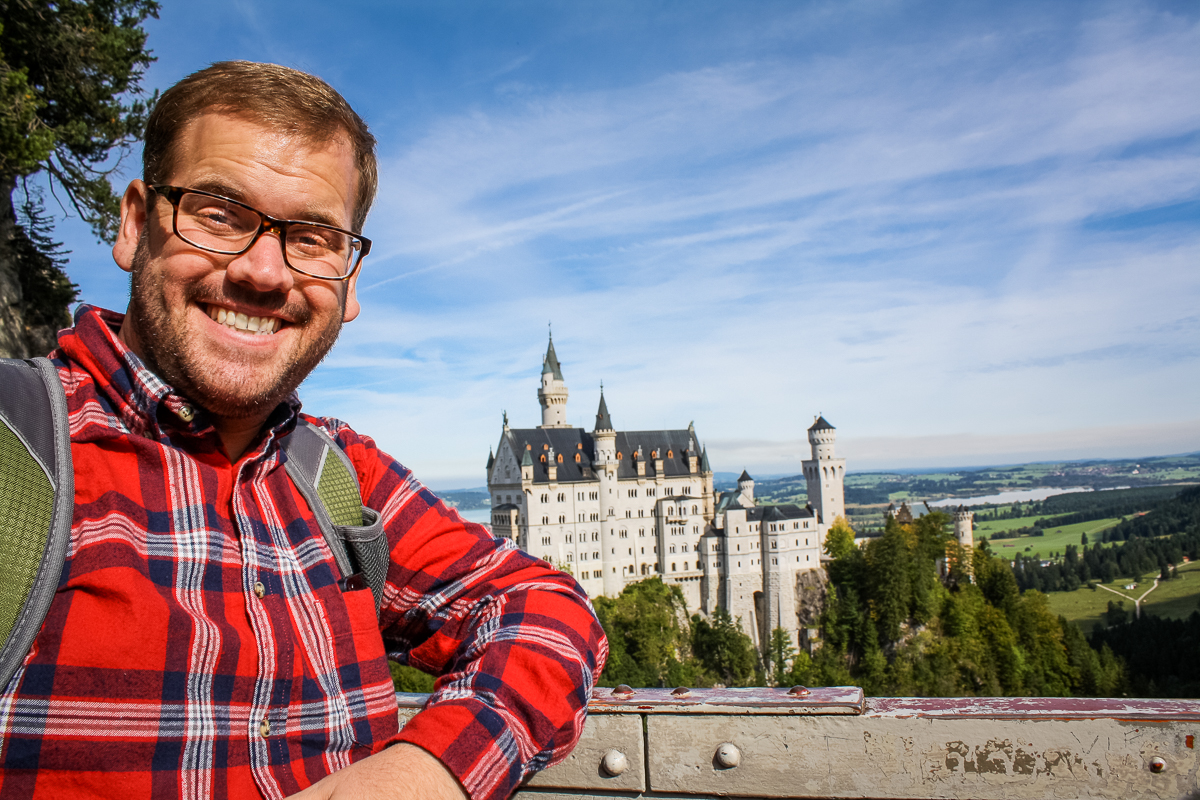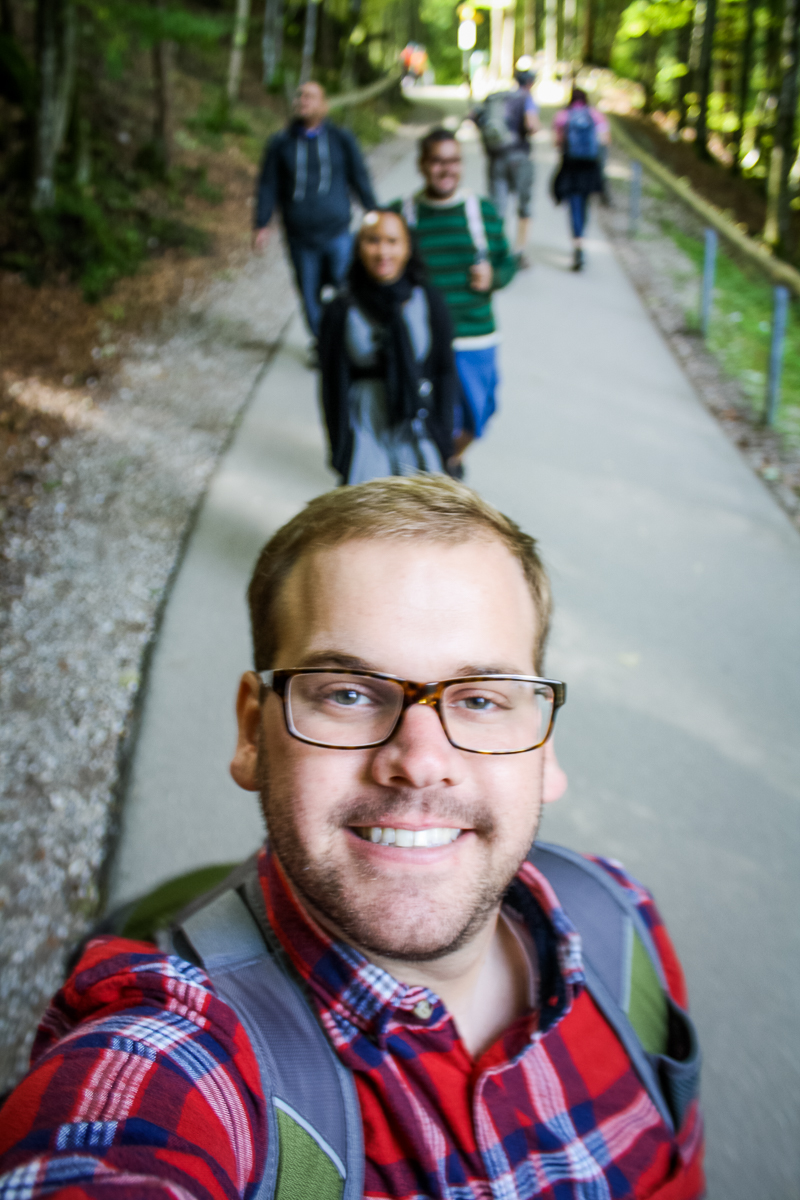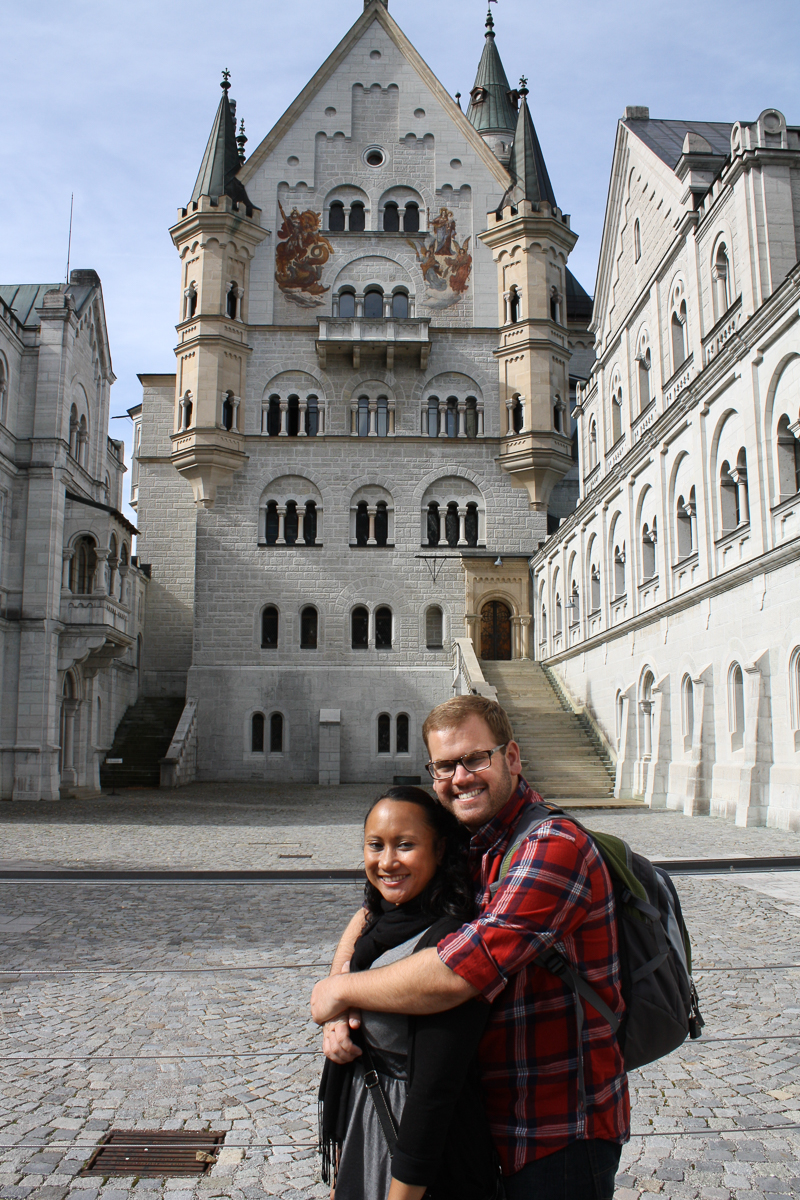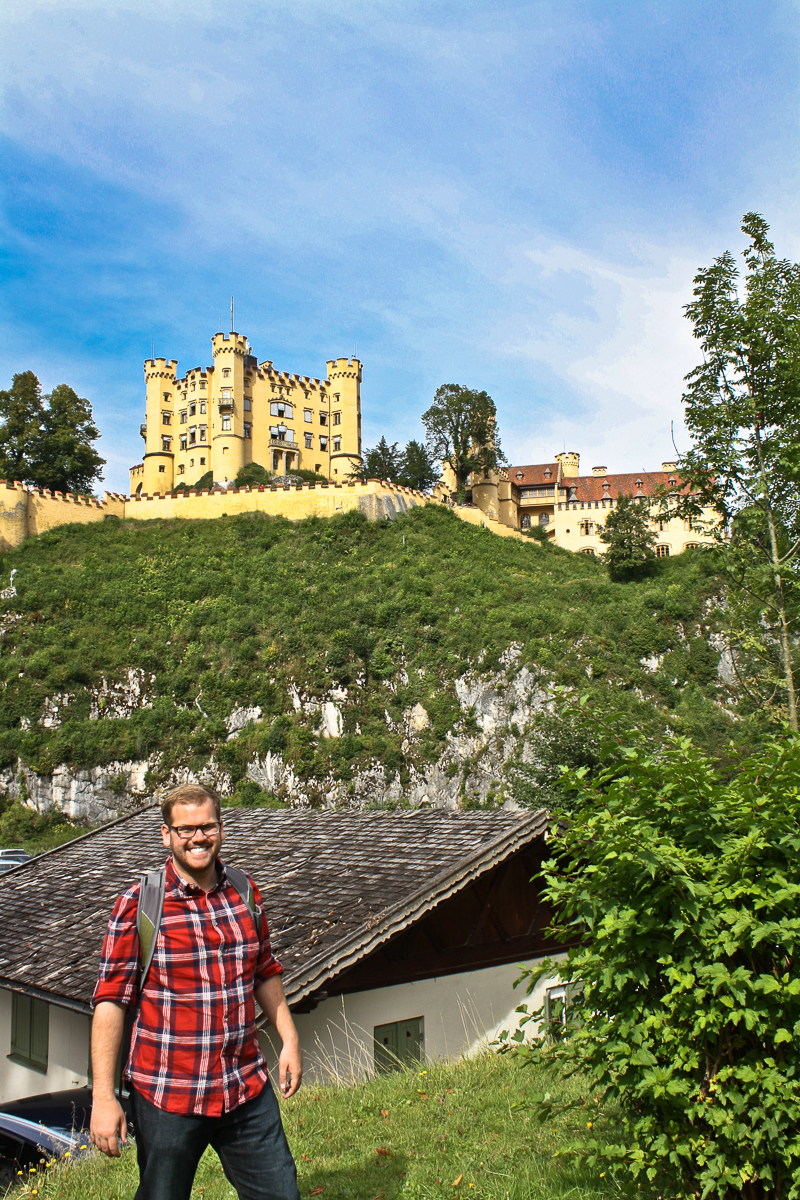When we first considered adding Munich to our Europe trip, the Neuschwanstein Castle in Bavaria was at the top of our minds. As far as castles go, there is no more scenic a view than Neuschwanstein's broad structure and medieval-looking turrets emerging from trees and clinging to a cliff. Of course, our intrigue was further compounded by its role as an architectural inspiration to Sleeping Beauty Castle at Disneyland. But as the trip drew nearer and plans began to materialize, it seemed less and less likely. The castle was a full day-trip commitment and it became difficult to wedge it into our plans as we only had one full day and two half-days in Munich. When we arrived in Munich, it seemed very unlikely that we would go at all.
That all changed after my miserable and embarrassing Oktoberfest experience on our first night in Munich. In short, my own insecurity led to me ending my Oktoberfest alone and without a single sip of beer. I was pretty emo about the whole thing (forgive my lack of a better word than 'emo'). Cindy, Chuck, and Jose tried desperately to cheer me up but I was being a good old-fashioned stick-in-the-mud. It was at that point when one of them reminded me of Neuschwanstein. "Perhaps some last minute itinerary planning and a trip out of town would be good for all of us?" And so it was decided.
We woke up early to head for Füssen, a town 90 minutes south-west from Munich (and 10 minutes from the castle). I had secretly hoped to drive there as the road between Munich and Füssen is intersected by a famous Bavarian drive known as the Romantische Straße, or Romantic Road. Unfortunately, none of us were comfortable teaching ourselves how to drive manual on foreign roads so we settled for the train! The train was a small, semi-hourly regional line and was the most "local" train ride of the whole trip. While it was clear that other tourists were making the same trek as ourselves, the majority of passengers were simply on their way to work. It was great to immerse into this routine, if only for a moment.
The train ride eased us out of the city and into a vivid green countryside. Rolling hills covered in milk cows crested alongside of us with ancient and chiseled mountains in the distance. Occasionally, our train would stop in a small village to drop off passengers or wait for a train to pass. This allowed us to study the little details of daily life in Bavaria—a bike resting against the backdoor of a house, an old painting on the corner of a building, or one of the many flower boxes perched below the windows; it all looked like a dream.
Eventually, we arrived in Füssen. We split a cab fare for a short ride to Hohenschwangau (yes, these village names get better and better!) and we were dropped off right in front of the Neuschwanstein Castle ticketing center. When we got out of the car, we looked up and almost collectively remarked, "Hey, there's a castle up there!" This would be our catchphrase for the rest of the day!
There are two ways to get up the hill to Neuschwanstein: One way is to hike one mile up the hillside. The other is to wait for a shuttle bus. If you haven't already guessed, we waited for the bus! It was with both smug satisfaction and embarrassing self-jugement that we watched all the fit, attractive Europeans march up the hillside. One day, perhaps? Probably not.
Up top, we learned that the shuttle bus drop-off was still half a mile away from the castle! That being said, we were beside a scenic bridge looking across a ravine to the Castle in all of its majesty. We jostled for a spot on the packed bridge and took turns taking photos and selfies. This was the quintessential view. The money shot. Heck, I even made it the cover-photo of this blog post!
After all of our photos were taken, it was time to walk along the ridge to Neuschwanstein. When we arrived at the castle, there was a very efficient tour process through which we were able to go inside. Unfortunately, photos were not allowed to be taken of the interior and I try to be nice about these things. The tour itself was short, lasting about 15 minutes, with gaggles of us tourists being shuffled efficiently from one room to another. We saw bedrooms, the throne room, a performance space, hallways, spiral staircases, and even the Grotto (more on that in a moment). Once at a stop, our guide would share a two-paragraph spiel on the significance of the room and take one or two questions. Only enough time was spent at each stop to get a sense of the room, without any clear study of the details, but I still managed to enjoy our stay greatly.
I suppose this is a good time for me to mention what I find so fascinating about the castle. Note: any quotes I share were taken from the Neuschwanstein Wikipedia page, a thorough read and one I recommend.
- It's not as old as it looks. While it may look like a medieval castle, construction began in 1868 and would cease in 1886! As an American in Europe, where at times it feels as though everything is measured in "x number of centuries before the U.S.A.", to encounter a medieval castle built after the American Civil War is fascinating to me.
- In my eyes, Neuschwanstein is one of the earliest clear-cut examples of "theming". It was constructed in the medieval style in an effort to be representative "of a romantic interpretation of the Middle Ages as well as the musical mythology of [Ludwig II's] friend Richard Wagner." In fact, each of the few completed rooms is curated to represent a different scene in one of Wagner's operas, from the art, to the furniture pieces, to the use of lighting. This concept was taken so far that one room, the Grotto, was actually made to look like a cave, with plaster stalactites and stalagmites. Like Hearst Castle in California, this is an example of a powerful man creating a themed environment for himself (and one other, in this case), 60-90 years before theming would be popularized for the masses in amusement parks.
- Which obviously brings us to Ludwig II of Bavaria, the king responsible for so much of the design that "the palace has been regarded as his own creation, rather than that of the architects involved." Ludwig II was king at a time of great political importance when Bavaria would become part of the German Empire, a step in the formation of modern Germany. But it would appear that he had little interest in these events, instead focusing his time and energy (and definitely money) towards arts and architecture. At the time, he was considered to be insane but I think we can now agree he was just acting like a Millennial (har har, Jahaungeer-humor). He died under mysterious conditions in 1886, adding to the legend of this man. He is a unique character and while we all came to Neuschwanstein for the castle, we all left wanting to learn more about the man behind the castle!
These three points are all observations we had made by the end of our tour. The tour itself concluded in the unfinished rooms of the palace, converted to a cafe and restrooms. At the back end of the room, you could go onto a balcony and survey the magnificent view available to Ludwig II of his (other) castle, the Hohenschwangau Castle, bordered by mountains, the Alpsee lake, and perched above the town of Hohenschwangau.
At this point, we were ready to leave the castle and start the half-mile trek back to the bus stop. Once on the valley floor in the village of Hohenschwangau, we thought it would be worthwhile to explore a bit. We walked to the shores of the Alpsee lake, studied the Hohenschwangau Castle from below, looked at a few souvenir shops, and of course, I finally indulged in that beer I had been crying about. With beer, pretzels, and schnitzel in our stomachs, we were a pretty satisfied bunch. I loved this little village and probably could have stayed forever but it was time to return to Munich before it got too late.
We walked down the main avenue in town, looking for a taxi back to Füssen, but settled for the bus. It took some time for a bus to arrive, giving us plenty of time to exhaust all of the "Hey, there's a castle up there!" jokes you could wish for (or not wish for!). By the time we finally caught the bus to Füssen, we learned we had just missed a train to Munich and another wouldn't arrive for a little over an hour. Hoping to kill some time in the small, yellow train station, Chuck turned on some music and encouraged a dance-off until, well—
Silenced and afraid of the connivence store lady, we decided to take our party out to the train platform where we waited patiently for our train to depart. For the entire 45 minutes we waited on the platform, a train labeled "Munich" sat dormant on one set of tracks. With a few minutes to departure, a second train arrived and well, I think Chuck explains it best!—
Luckily, we safely travelled back to Munich and were not sold on the black-market! Our trip to Neuschwanstein was a shot of energy for our trip and an important attitude-fixer for me. After the emotional roller-coaster that the previous few days had been, this day-of excursion was a tremendous source of rejuvenation and allowed us to approach the concluding days of our trip with adventure and optimism. It has taught me to space out rigorous travel with an occasional "relaxation day", where we can continue to experience new things but at a more casual and relaxing pace. I will always look fondly upon this day!
For a few more photos of our day-trip to the Neuschwanstein Castle, check out the gallery below!































